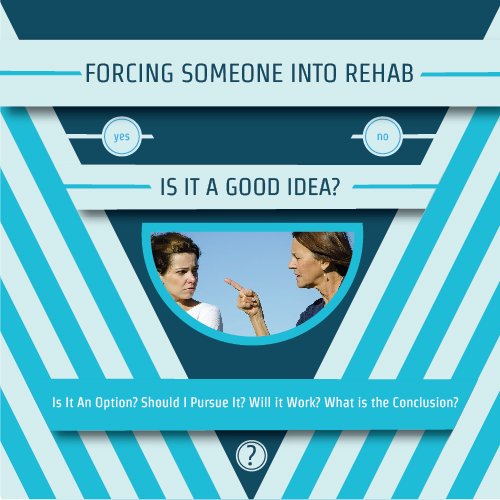These types of programs generally occur at outpatient drug rehabilitation centers. Regardless, the cost of not getting treatment can be very high. For cost effective inpatient and outpatient care, utilizing an insurance coverage company can assist cover the expense of rehabilitation. Numerous insurance plans cover substanceabuse treatment entirely. Speaking to an insurance service provider or a representative from a possible program is an excellent location to begin. The Healing Town's insurance verification tool can help to work out practical choices.
The kind of treatment program is the most significant factor in determining the length of time drug rehabilitation will be: Detox is typically around seven daysInpatient programs typical 21 to 90 daysLong-term property care programs are typically three to 12 monthsOutpatient programs depend on the strength of the program, but they generally vary from a few weeks to three monthsThe U.S. Unlike other drugs, hallucinogens seem to affect the receptors of serotonin neurotransmitters more than dopamine. Hallucinogens like LCD, DMT, peyote, psilocybin, and ketamine imitate serotonin and get in serotonin receptors in the brain, changing behavior, personality, and perceptions. Research study shows that hallucinogens can really change the shape of neurons permanently, forever altering the way your brain sends out and gets messages.

Other hallucinogens can develop dependence nevertheless, and all of them can cause problems in the personal and expert lives of those who take them since of the extreme way they impact personality and habits. Many hallucinogens also present a significant threat of overdose as well. In addition to those illegal compounds called above, there are more drugs that can develop hazardous addictions, such as: Marijuana Inhalants Alcohol Nicotine Many drugs are addictive because of how they impact the brain's interaction system.
Drugs either stimulate the release of or imitate the actions of pleasure-creating neurotransmitters like dopamine and serotonin, producing short-lived feelings of euphoria and happiness. The brain is wired to seek more pleasurable sensations, which would generally be triggered by activities like sex or consuming good food. When drugs develop a rush of artificially created pleasure, the brain's natural disposition is to look for more satisfaction.
As the user continues to consume drugs, tolerance develops, requiring bigger amounts of the drug at each sitting to accomplish the very same high. The user will continue to increase the dosage they take control of time, and the brain will adjust to the constant increase of neurotransmitters by decreasing its production of neurotransmitters and decreasing the number of satisfaction receptors.
With time, the brain becomes rewired and its interaction system will be completely modified. The result is that when the user stops consuming drugs, the system that has actually been rewired for a consistent increase of illicit substances is all of a sudden left with no pleasure chemicals at all. There is absolutely nothing to balance out the inhibitory mechanisms that the brain has taken into place, and a range of uncomfortable and unpleasant drug withdrawal symptoms embeded in, like depression, insomnia, headaches, and a variety of flu-like symptoms.
Indicators on Why Would A Drug Rehab Call My Phone You Should Know

Besides the sometimes permanent changes that drugs have on the brain, they also do a number on the physical health of your body in general. Even from the extremely first use, drugs have actually marked short-term results on the body, such as: Increase of hazardous behaviors and sexual practices Damaging changes in cravings Extreme wakefulness or drowsiness Impacts on heart rate and high blood pressure Increased danger of cardiac arrest or stroke Anxiety attack Overdose and death Naturally, a dependency assumes long-lasting use of a substance, which will have much more dreadful results on the body, depending on the substance.
Anybody that is having a hard time with an addiction to drugs or alcohol will benefit by going to rehab. Those who have actually suffered from addiction know how difficult it can be to overcome it alone, and the healing environment of rehab uses the assistance needed to make an effective recovery. Rehabilitation includes customized treatment plans to help patients identify and conquer the underlying issues that started their addiction.
In addition to dominating one's addiction, those participating in dependency treatment will likewise discover the essential tools for building an efficient, healthy, and happy life (how to open a drug rehab center). One of the primary advantages of going to a rehabilitation center is the https://www.scribd.com/document/474588862/328652Little-Known-Questions-About-What-Is-Alcohol-Rehab-Like structure that it offers you with. Treatment programs stress creating day-to-day regimens filled with efficient activities and therapy sessions to help keep patients engaged and remove interruptions.
Client's are enabled to sit, speak, and unwind regularly throughout the day throughout breaks and in the evening due to the fact that it is essential to not only learn new coping abilities however practice executing them in a safe environment. When people have been suffering from a dependency to drugs or alcohol, they have actually established habits and ways of thinking that both enable their dependency and discourage much healthier habits.
The structure of rehab establishes an easy day-to-day schedule that makes sobriety a concern while preserving a balanced way of life that patients can adhere to post-treatment. Continuing the structured ways of living found out through dependency healing programs suggests you will feel less pressure to discover relief in drugs or alcohol when you return house (how much does drug rehab cost without insurance).
Another significant advantage of drug and alcohol rehab is the truth that clients will be in a safe and encouraging environment surrounded by individuals who understand exactly what each other are going through. Peer assistance is a primary aspect of treatment and is definitely necessary to maintain long-lasting sobriety - what percent of drug addicts relapse after rehab. An inpatient or outpatient rehab program provides numerous opportunities to link with other people in healing through support groups and group treatment and to develop a network of assistance.